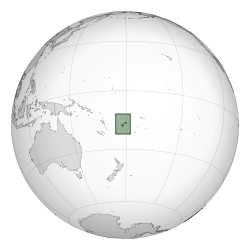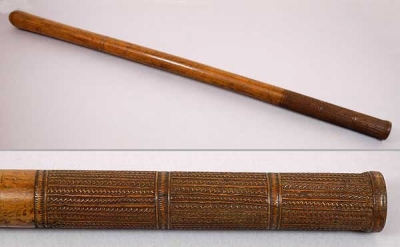Bowai (1925.59.2)
 FijiBowai from Fiji, Oceania. Collector not known. Purchased by the Museum from Stevens Auction Rooms in 1925.
FijiBowai from Fiji, Oceania. Collector not known. Purchased by the Museum from Stevens Auction Rooms in 1925.
This straight wooden club is known as a bowai (pronounced 'um-bow-eye'). As part of the many shared cultural traditions of Western Polynesia, bowai are found not only in Fiji (from where this example comes), but also in Tonga and Samoa. The handle is defined by three bands of carved zigzag designs, which also serve to improve the grip. The shaft gradually thickens towards the head, making this weapon essentially very similar in form to a baseball bat.
This club may look deceptively simple in its conception but mathematical principles were applied to its manufacture, resulting in a perfectly balanced object, both in the functional and the metaphorical senses. Thus, just as a baseball bat provides the consistency of grip and weight distribution to strike a ball with optimum accuracy and power, so was the bowai as effective at smashing a skull. Although bowai were traditionally quite plain, as this example is, it was not uncommon to find the head sections studded with the teeth of victims.





